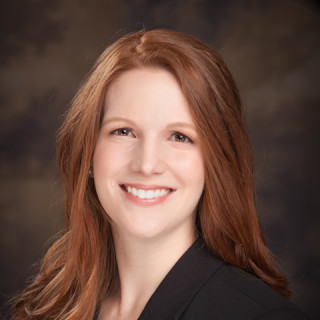
Throughout our medical training, we learn how to build trust and communicate effectively with patients, but we also develop meaningful relationships with our colleagues that are worth exploring and nurturing to a greater degree than we currently do.
Medical training is designed to be experienced in discrete chunks, paradoxically creating sharp outlines around the fuzzy spectrum of patient care. In medical school and residency, we rotate through “blocks” of time with each specialty. As we move between rotations, continuity with our colleagues is never guaranteed. At the same time, we often quickly build intense and profound relationships with the colleagues with whom we work. Our bonds are forged in the flames of duty and responsibility, and cemented in long hours spent shoulder to shoulder in the hospital or clinic.
In some ways, we feel alone — and yet, it is important that we are together. I am keenly aware of my existence as a discrete island, but somehow with the good fortune to be tethered to a neighboring island so we do not navigate the waters in isolation. Our colleagues lift us through professional crises (how do I manage this deteriorating patient?) and personal ones (I’m late to dinner with my spouse yet again). We text each other constantly for more hours of the day than we probably should be awake. We laugh, joke, complain, nickname each other, and contemplate the medical literature. These relationships keep us motivated and engaged, and give us a sounding board and a safety net when we’re not quite sure where to go next. Most importantly, we learn to trust and to rely on each other.
Then, the calendar swoops in on the first of the month and these bonds are neatly severed. Our group texts go silent; our inside jokes fade. The process begins anew.
Not every team with which we work during our training functions like the one I described here, but perhaps we should be more deliberate in making sure they do. I suspect much of the scheduling is done randomly, and team dynamics are not a major factor in the equation. We may do ourselves a great disservice with this practice.
When I was part of a team that functioned exceptionally well, I believe I learned more quickly and retained information more easily. I could argue that these teams provided better patient care, as we spent less time on our own internal machinations and more on the tasks at hand. Being part of a good team could also help combat elements of the seemingly-ubiquitous burnout phenomenon, as team members might be able to shoulder the weight of the world a little more easily if someone they trust is there every day to help them carry it. In fact, I have experienced significant feelings of loss, and even grief, when moving on from a team like this because I felt as though I were losing a significant piece of my support system.
Outside of medicine, there is some support for my anecdotal observations about the benefits of good team dynamics. In fact, there’s an entire industry devoted to team-building because being a member of a good team tends to make people happy, and happy employees are often more productive employees. Companies can also reduce turnover and increase efficiency with minimal up-front investment, so it tends to be a win-win.
It is not easy to create a dream team, of course. (It does take more than just a day of obstacle courses and trust falls.) We all must have a baseline level of skill, but several studies indicate that the psychological factors that make up our personalities have the strongest bearing on a team’s effectiveness. To do it right, you have to figure out the nuances of each potential team member’s personality, as well as decide what constitutes the right mix of personality traits to maximize interpersonal dynamics and productivity.
For example, if multiple team members tend to be aggressive leaders, they may spend more time butting heads than getting good-quality work done. (Basketball fans might think of it this way: you can’t just put the NBA’s top 5 players on one team and expect them to win a championship. It doesn’t matter how good they are individually if they don’t work well together.) Conversely, a team dominated by more passive personalities may not take the initiative to drive their work to the next level. Neither is a desirable outcome; in fact, we should actively avoid creating environments like these.
The first step in creating a real “championship team” is to make team dynamics a priority. There are many ways to go about this, but one place to start could be personality profiling tools that evaluate the neuroscience-based “Big Five” traits (extraversion, emotional stability, agreeableness, conscientiousness, and openness). These assessments could be integrated into each trainee’s onboarding requirements, and the results used to create teams based on each individual’s unique constellation of attributes.
As an added bonus, these tools could also encourage trainees to self-reflect on how to most effectively apply their relative strengths and to mitigate their relative weaknesses in a variety of environments. This could help them become more adaptable and creative in approaching their professional environment, and potentially their interactions with patients.
I would also encourage training programs to consider making rotation scheduling more flexible. Regardless of how each team is chosen, programs should actively and regularly solicit feedback on team dynamics. Program administrators can then use that information to deliberately keep a successful team together or can choose to “trade” or “draft” some players if another team is not living up to its full potential.
I was inspired to write this piece after working on a particularly good team, as I was hoping to advocate for repeating that experience. But, after giving it some careful thought, I believe that everyone stands to benefit from a concerted effort to make championship-level teams the gold standard for our training.
Amy Blake is an internal medicine resident and a 2018–2019 Doximity Author.
The views expressed herein are solely those of the author and do not necessarily represent the views of any organization with which she is or has been affiliated.
References:
- As an example, see http://www.hoganteamreport.com/
- Winsborough D, Chamorro-Premuzic T. Great Teams Are About Personalities, Not Just Skills. Harvard Business Review. https://hbr.org/2017/01/great-teams-are-about-personalities-not-just-skills. Published 2017.
- Grant A. Goodbye to MBTI, the Fad That Won’t Die. HuffPost. https://www.huffingtonpost.com/adam-grant/goodbye-to-mbti-the-fad-t_b_3947014.html. Published 2013.
- Chamorro-Premuzic T, Winsborough D. Personality Tests Can Help Balance a Team. Harvard Business Review. https://hbr.org/2015/03/personality-tests-can-help-balance-a-team. Published 2015.
- DeYoung C, Hirsh J, Shane M, Papademetris X, Rajeevan N, Gray J. Testing Predictions From Personality Neuroscience. Psychol Sci. 2010;21(6):820–828. doi:10.1177/0956797610370159







